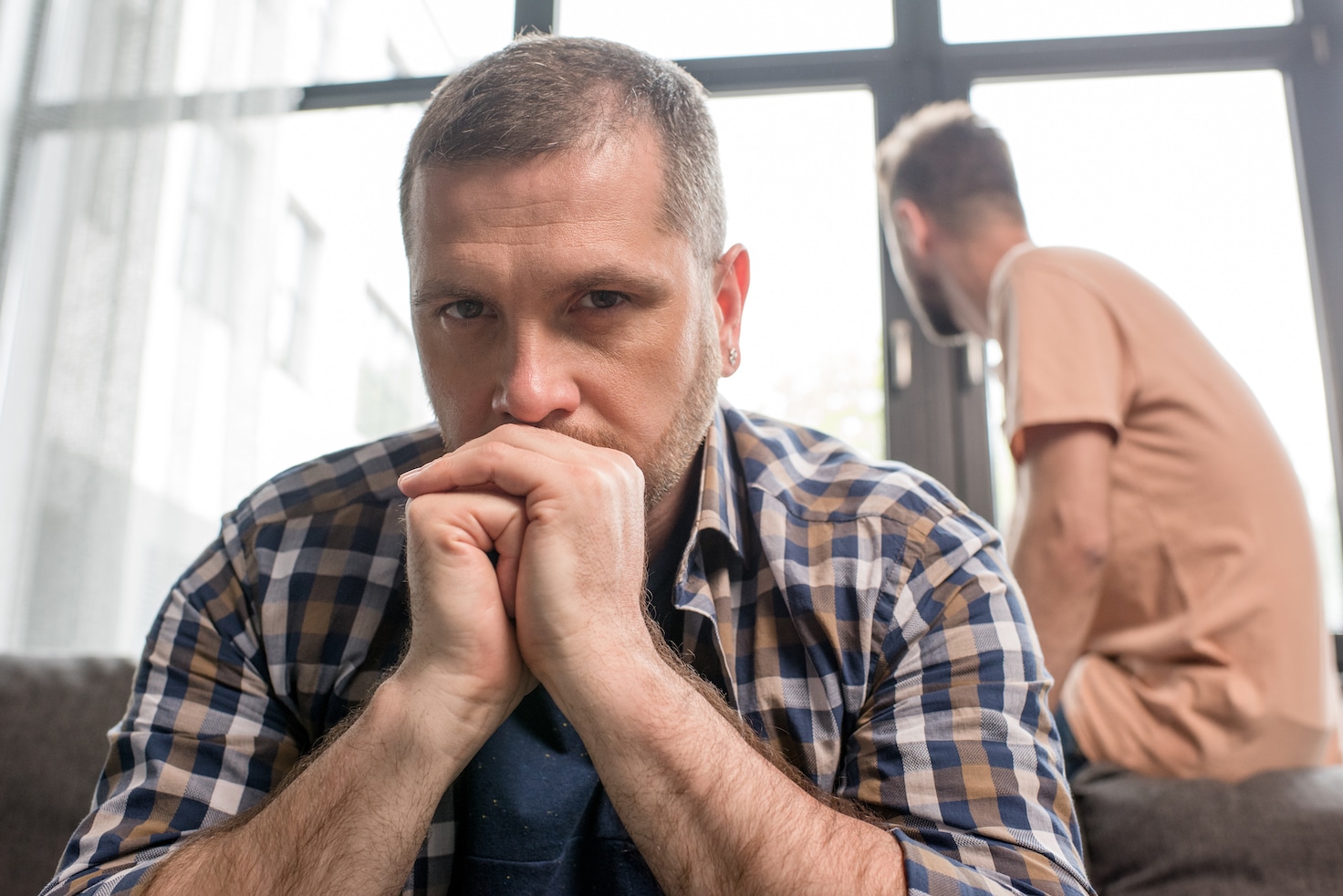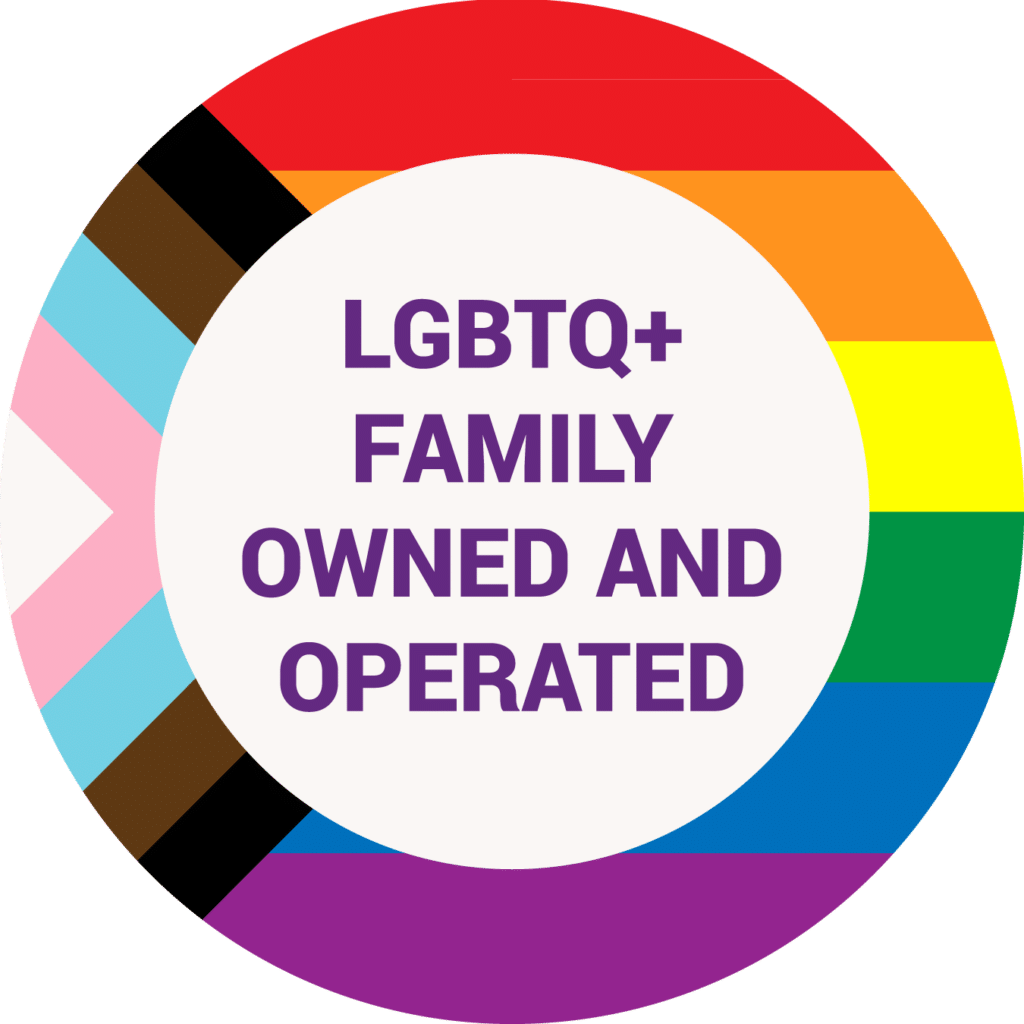Homophobia is an irrational fear, hatred, mistrust, discomfort with or discrimination against people who are lesbian, gay, or bisexual.
Internalized homophobia is when these feelings are experienced by members of the LGBTQ+ community themselves. [1] It’s when the aversion, fear, or hatred of same-sex relationships or nontraditional gender identities are turned inward.
The emotional stress and actual physical danger that is often associated with homophobia can increase the risk of queer people developing an addiction or mental illness. Identifying as LGBTQ+ is, for instance, linked with increased odds of being diagnosed with an alcohol or other drug use disorder.
In fact, research has shown that LGBTQ+ adults are more than twice as likely as heterosexual people to use illicit drugs and almost twice as likely to suffer from a substance abuse disorder. [2]

As children grow up, they learn—from parents, siblings, teachers, coaches, media icons, etc.—the values of their society. In subcultures that are potentially homophobic and heterosexist, kids will often incorporate negative ideas about homosexuality and same-sex attraction and hold onto these views as they become adults.
Such cultural influences don’t discriminate: They tend to affect people from all walks of life, equally. Like everyone else, people who come to identify as LGBTQ+ may also have been socialized into thinking that being non-heterosexual is somehow “bad” or “wrong” or “immoral” or “insane.” This can result in feelings of shame, self-loathing, self-disgust, or self-hatred. Collectively, such feelings are known as “internalized homophobia” or “internalized oppression.”
People experiencing internalized homophobia may also feel the need to “prove” that they’re straight. So, they might act in ways that align with the stereotypical behavior of straight men and women—or even bully and opening discriminate against people whose gender identity and/or or sexual orientation don’t conform to a rigid notion of what is “normal.”
Simply put, internalized homophobia happens when LGBTQ+ individuals are subjected to society’s negative perceptions, intolerance, and stigmas towards LGBTQ+ people, and come to believe that such ideas are true. This results in self-devaluation and all the internal mental-emotional conflicts that come with it. [3]
The real culprits—the root cause of internalized homophobia—are the homophobic and heterosexist societies that reinforce rigid notions of “correct” sexual orientation and/or gender identity via social policies, laws, culture, education, health care, and religious institutions.
Nevertheless, growing up in such environments has real effects on individual LGBTQ+ people. Those who don’t conform to traditional gender/sexuality norms are subject to stressors that can result in substance abuse or other mental health disorders. And this is true whether the homophobia comes from other people or from within oneself.
There’s great variety in how internalized homophobia can manifest. And recognizing its more subtle forms can sometimes be quite challenging. Some of the many possible expressions of internalized homophobia include the following: [4]
Along with those listed above, these more general patterns can also be signs indicating the presence of internalized homophobia.
Because of the social stigma surrounding homosexuality, a sense of shame, secrecy, and self-imposed silencing/censorship may be an aspect of internalized homophobia experienced by members of the LGBTQ+ community.
The sense of being peculiar or different is often central to a queer person’s identity. This can fuel patterns of secrecy and dishonesty that may have damaging intrapsychic and interpersonal consequences. The level of emotional havoc that secrecy and dishonesty create varies from one person to the next.
In any case, when the heart and mind are distorted by symptoms of internalized homophobia, it can be difficult to see clearly the harm caused by such patterns. Examples of behavior rooted in secrecy and/or dishonesty include:
Horizontal oppression—aka lateral violence—is a symptom of internalized homophobia that fuels a tragic cycle of abuse. In this pattern, LGBTQ+ people discriminate again other LGBTQ+ people—thereby perpetuating the culture’s homophobia and heterosexism; and colluding with their own oppressors.
Examples of horizontal oppression may include:
Being in the closet—i.e., keeping one’s sexual orientation a secret—is a life-shaping pattern of concealment. LGBTQ+ individuals who choose to remain in the closet often experience low self-esteem, high levels of anxiety, and lack of personal fulfillment. [5]
Coming out is not only an act of self-love and recognition. It also relieves the pressure of having to live a life of secrecy. So, while the decision regarding if, when, and how to come out belongs to each individual within the LGBTQ+ community, there are good reasons to encourage it.
On the other hand, there’s no denying that coming out can be dangerous. A person who is honest about their LGBTQ+ identity risks not only social rejection, but also physical violence, loss of employment, or loss of a home. Each person must consider their emotional and physical safety in balance with their emotional and physical needs—and from this cost-benefit analysis, make a decision that feels authentic to their situation.
Shaming those who remain in the closet is never the answer—but rather an example of horizontal oppression (as described above). While coming out to important people in one’s life may be an crucial step in overcoming personal shame and self-devaluation, a person’s choice to remain in the closet should not necessarily be considered a primary symptom of internalized homophobia.
Internalized homophobia and oppression can negatively affect LGBTQ+ people in a wide variety of ways. Some of the most prevalent include:
A person may try to hide their sexual orientation from family, friends, or work colleagues by “passing” as straight. This form of secrecy may be justified as necessary to protect others—for instance, a live-in partner who they describe as “just my good friend.” This sort of fear and secrecy can be an effect of internalized homophobia.
Men or women may choose not to socialize at gay/lesbian venues when in their home town though feel fine doing so when traveling abroad. Such people may also avoid gay/queer peers or colleagues who appear “a bit too campy” or in some other way obvious about their sexual/gender identity. This may be a sign of internalized homophobia.
Some members of the LGBTQ+ community may actively avoid or denigrate heterosexuals. This is an example of reverse discrimination from some gay and bisexual people toward heterosexual people, which may be rooted in feelings of superiority—i.e., that gay/queer people are in some way better than heterosexual people or cisgender people.
Someone who maintains a super-hectic lifestyle, with long work hours and tightly scheduled days, may use this as an excuse for not cultivating long-term relationships. Claiming that one’s life is “too busy for a relationship” can be a sign of conscious or subconscious patterns of internalized homophobia.
The quintessential example of this is the gay man or lesbian who, again and again, “falls in love with a friend who happens to be straight.” This pattern of being attracted to unavailable people may be the result of internalized homophobia.
Both external and internalized homophobia can negatively impact a person’s physical and mental health. It can influence their thoughts, feelings, and behaviors. It can sabotage interpersonal relationships, and prevent a person from creating a genuinely fulfilling and inspiring life.
Internalized homophobia can fester in an environment of shame, stress, and anxiety—which prevents an LGBTQ+ person from being seen and loved for who they are; and leading a fulfilling life. It can set the stage for and exacerbate anger, bitterness, loneliness, and grief.
It may prevent a person from having intimate relationships or sabotaging the ones they do have. It can also contribute to long-term physical or mental illness, substance abuse, and self-harm.
The mental and physical health impacts of homophobia for LGBTQ+ people may include:
Many of these physical and mental health challenges are rooted in patterns of chronic stress. For an LGBTQ+ person, the source of such stress may be hearing a homophobic slur at work or school. It may be fearing a family member’s judgment; or being the victim of a hate crime. The stress may be around deciding whether or not to come out of the closet. It may have to do with not being allowed to legally marry the person they most love and want to spend their life with.
Factors such as these all contribute to what has become known as minority stress—a form of stress that is a direct result of external and internalized homophobia. [6]
Chronic stress can create all kinds of negative effects and basically wreak havoc in the human body. [7] These effects include sleep problems, high blood pressure, depression, anxiety disorders, depressed immune function, and heart disease. The stress that accrues for minority individuals living in a hostile homophobic culture accumulates in ways that results in these and other physical and psychological illnesses.
The negative impacts of internalized homophobia often spill out into the lives of the people closest to the suffering individual. It can break down trust among friends or family members. It can catalyze rageful outbursts with harshly judgmental words.
Within romantic relationships, internalized homophobia can cause ongoing conflict and heartbreak. And it may lead people in positions of social power and responsibility to make decisions that are harmful to the LGBTQ+ community.
Most insidiously, internalized homophobia tends to divert the focus away from the true culprit, the root-cause of this type of suffering—which is the structural oppression of homophobia and heterosexism.
When LGBTQA+ people fight with themselves or among themselves, the larger societal dynamics can remain hidden and operating behind the scenes.
Research suggests that sexual minorities (e.g., people who identify as lesbian, gay, or bisexual) are at greater risk for substance use and mental health issues compared with the sexual majority population that identifies as being heterosexual. [8]
As mentioned above, LGBTQ+ adults are more than twice as likely as their heterosexual counterparts to use illicit drugs and almost twice as likely to suffer from a substance abuse disorder.
An extensive survey on drug use and health also revealed that: [8]
What makes substance abuse in the LGBTQ+ community so prevalent? There are a variety of contributing factors, which include:
A sense of personal integrity and a positive view of one’s sexual orientation are critical for a person’s mental health. The ability to experience physical and emotional intimacy—in ways that feel safe and loving—is also key to psychological wellbeing.
Internalized homophobia can undermine the sense of safety, support, and camaraderie within the queer community. But it’s also possible to cultivate and nourish healthy community connections, among the widely diverse group of people that identity as LGBTQ+.
Working together to overcome internalized homophobia can bring hugely positive results on both individual and collective levels. These include physical and emotional and wellbeing; a more resilient and effective political movement; and ultimately a kinder and more compassionate world.
An important part of healing from internalized homophobia—and from related mental health and/or substance use disorders—is to find an LGBTQ+ positive therapist, counselor or psychologist who can guide one through the healing and recovery process.
No Matter What Recovery is an outpatient treatment center for substance abuse and mental health in Los Angeles that primarily serves people in the LGBTQ+ community.
Our treatment center provides a safe and welcoming environment for LGBTQ+ individuals who are recovering from substance use and/or mental health disorders. To support the healing process, a team of highly skilled therapists utilizes a range of powerful modalities including:
Our team of medical practitioners and compassionate counselors understand that no two people—and no two addictions or mental health problems—are exactly alike. Each client has their own unique circumstances that require an individualized approach to healing.
In particular, we are sensitive to the unique challenges of the LGBTQ community, and are committed to helping such clients live an authentically satisfying, empowered, and joyful life.
To learn more about our therapeutic services for the LGBTQ+ community, please feel free to contact us.
[1] What Is LGBTQIA+? GayCenter.org
https://gaycenter.org/about/lgbtq/
[2] Medley, Grace et al. (October, 2016). Sexual Orientation and Estimates of Adult Substance Use and Mental Health: Results from the 2015 National Survey on Drug Use and Health. Substance Abuse and Mental Health Services Administration (SAMHSA).
[3] What Is Homophobia? Planned Parenthood.
https://www.plannedparenthood.org/learn/sexual-orientation/sexual-orientation/what-homophobia
[4] Internalised Homophobia. The Rainbow Project.
https://www.rainbow-project.org/internalised-homophobia/
[5] Camp J, Vitoratou S, Rimes KA. LGBQ+ Self-Acceptance and Its Relationship with Minority Stressors and Mental Health: A Systematic Literature Review. Arch Sex Behav. 2020 Oct;49(7):2353-2373.
https://www.ncbi.nlm.nih.gov/pmc/articles/PMC7497468/
[6] Dentato, Michael (April, 2012). The Minority Stress Perspective. American Psychological Association.
https://www.apa.org/pi/aids/resources/exchange/2012/04/minority-stress
[7] Stress Effects on the Body. American Psychological Association.
https://www.apa.org/topics/stress/body
[8] Medley, Grace et al. (October, 2016). Sexual Orientation and Estimates of Adult Substance Use and Mental Health: Results from the 2015 National Survey on Drug Use and Health. Substance Abuse and Mental Health Services Administration (SAMHSA).

